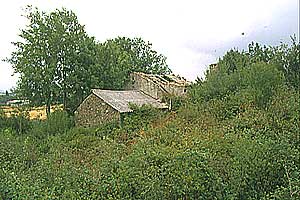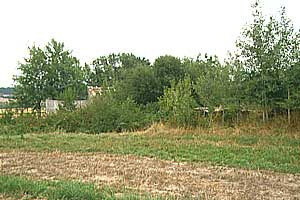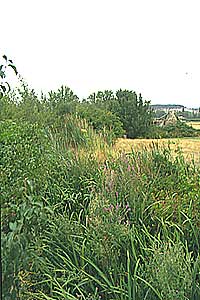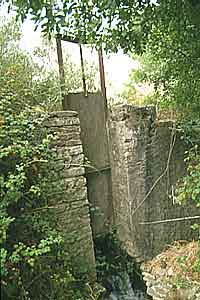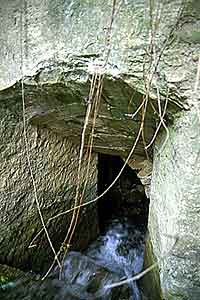Path: Introduction -
Visit the mills; catalogue - Arrés

Mills in Alto Aragón — harinero, central eléctrica
Arrés

Arrés is easily reached from Jaca. Take the main road to Pamplona. After about 20 km
where the road bends right over the bridge (Puente La Reina de Sta Cilia de Jaca), don't
turn but continue straight-on towards Huesca. Almost immediately there-after is
signposted. Follow the narrow road for about 3 kms until you notice a
patch of trees not too far away to the right. It's before you'll reach the farm houses
and the bend towards the village. The mill is in fact two : a harinero, muy ruinoso, and a powerstation with lots of interesting stuff.
The mill gets water from the Río Aragón.
Pictures: 17.VIII.2003

